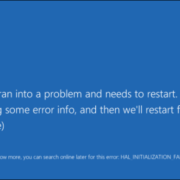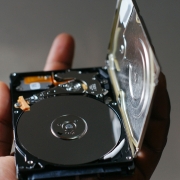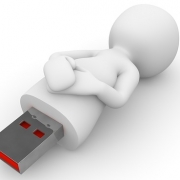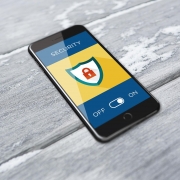Disable Unneeded Startup Programs in Windows 7, 8 & 10
Startup Programs
Disable Unneeded Startup Programs in Windows 7, 8 & 10
By Stephan Stemmett / Aseem Kishore

It is irritating when you start up your computer and have to wait 10 minutes while all kinds of software loads up: Dropbox, antivirus, Chrome, Java, Apple, Adobe, graphics & printer drivers drivers, etc. If you have a lot of programs loading up that you don’t use immediately, then they are just slowing your computer down and should be disabled.
Most software prefer to load into memory as soon as Windows starts up, so that when you use it, it loads quicker. We would prefer your computer working sooner, rather than have a program you use once a week slow you down every day.
Disabling startup programs can increase the speed of your computer and usually will not adversely affect your computer because the software is loaded manually when you open a program.
Managing Startup Programs
You can manage your startup programs by opening the System Configuration Utility. Click on Start and then Run, type in msconfig and click OK. In Windows 7, you can just click on Start and type in msconfig. In Windows 8, the msconfig command brings up the System Configuration utility, but the Startup section now appears in Task Manager.
Clicking on the Startup tab in Task Manager on Windows 8 or in the System Configuration dialog will bring up the list of startup items. In Windows 8, the list looks a bit different and it also gives you some extra info like the estimated impact the process has on the startup time.
In Windows 8, you have to select the item and then click the Disable button at the bottom right. In Windows 7 and earlier, you uncheck the box that is at the far left of each entry in the list.
Note: If you’re running Windows 2000, when you type in msconfig, you’ll get an error message saying that Windows could not find anything with that name. That is because Microsoft took out the msconfig feature out of Windows 2000 (even though it was in Windows 98) and then after many customer complaints, they put it back in Windows XP.
The startup list has two columns: The startup program name and the startup program path. We routinely disable many of my applications without any problems. Remember most of these are just applications that were installed on your computer, so disabling these programs won’t affect the core operating system.
However, you may not want to disable everything; for instance, if you have Accounting, Anti-virus software or a wireless configuration utility, you want to keep those. If you are not able to distinguish what the program is for from the name, try to look at the full path.
As you can see from the list, there is a program named Java Platform Updater with a path to an executable named jusched.exe, which you should disable because of all the security vulnerabilities Java causes. Unless you need Java for a specific web site or application, disable it and uninstall it from the Control Panel.
The top three items have to do with Intel and we would always leave anything going to C:\Windows\system32 enabled because that’s probably controlling a piece of hardware on the system. If you don’t want Chrome loading automatically with Google Now notifications, etc, then feel free to uncheck that. Adobe Reader is another one we always disable.
If you can’t tell what a program is from it’s name or path, then try to disable it and see if it makes any difference once you re-start your computer. Most of the time we these programs do not do anything very critical on the computer. If something stops working, then just re-enable the software. Click OK and you’ll be asked to restart the computer. When you log in, you should find the log on slightly faster depending on how many items you unchecked and what they had to load on Start-up
In Windows 8 & 10 however, it doesn’t even show you the paths anymore. It tries to make it simpler and more user-friendly, however, it can be more confusing. For example, Google Chrome has up to 15 items loading and most of them are named Google Chrome.
If you don't know if you should disable it or not, you can right-click on an item and choose Open File Location to see the exact path to the EXE file and try to interpret it from there.
The other way to get items out of the startup list is to simply load the specific program and go to Preferences or Options. Most software programs have a setting that loads the program on startup which can be disabled from within the program itself. Your computer should start up a little faster. If it does not, feel free to contact us:
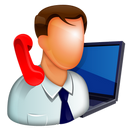 IT Experts are specialists in this field.
IT Experts are specialists in this field.
Contact us for any assistance that you need.
In a matter of minutes we can remotely log into your computer – safely and securely – to assist you with any issues you might experience.
What is remote support? Click here to find out.









 PixaBay
PixaBay 